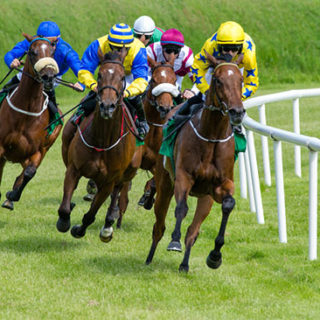Opportunism reveals the true intelligence of titmice
Is smartness linked to the size of the brain? Larger organisms usually have larger brains, but are they really more advanced? Is a wood pigeon smarter than a chaffinch? Through the ages, birds have been associated with both stupidity, as in “birdbrain”, and wisdom, as in “wise as an owl”. But what is the true status of birds’ intelligence?
Anders Brodin, Professor of Theoretical Ecology at Lund University’s Department of Biology, has spent many years studying birds’ learning and cognitive abilities.
Bird’s brains are different to those of mammals, as they lack, among other things, a cortex – the thin, folded outer layer in mammals’ brains, says Anders Brodin.
“Birds are generally small and, without exception, have smaller brains than mammals. The assumption has always been that the brain and its capacity are linked to the size of the body – large organism, larger brain and better cognition. But, is that really the way to measure intelligence?”
Cognitive research studies how sensory input, learning and information are managed. Better cognition (higher intelligence) entails better and more efficient handling of information.
In his research, Anders has studied the behaviour of a range of small birds, with a particular focus on various titmice. Anyone who has fed birds during the winter has more than likely seen titmice. These include the blue tit and great tit, which are often the first to discover a new bird table offering food. They are among the opportunists of the bird world.
“Different behaviour among birds sets different demands on the brain. Among other things, it has been shown that, on average, migrating birds have a smaller brain than those that stay in one place”, comments Anders Brodin.
“After memorising the hiding places, the released great tits flew round and ate the stashed food.”
The brain also differs considerably between organisms in the same group, he continues:
“If you compare, for example, a mouse brain with a human brain, you can see that the human brain has a clearer division into areas, various centres. In the human brain, it can be seen that certain mechanisms and functions that belong together are far closer to each other. Vision centres, hearing, and so on.”
“There is a reason why it’s we humans who are talking about intelligence, cognition and smartness, and not the chimpanzees or other organisms. This is something they would do in Planet of the Apes.”
“Among the mammals, it is humans who have the most advanced brains. The closest relative, the chimpanzee, has a brain roughly half the size of a human brain”, states Anders Brodin.

Anders Brodin, Professor of Theoretical Ecology Photo: Peter Frodin
If you look at marine mammals such as dolphins and whales, they have large brains, but they have fewer neurons than humans.
Anders Brodin, Professor of Theoretical Ecology at Lund University’s Department of Biology
What about the cognitive abilities of birds, and titmice in particular?
In one experiment, great tits sat in their own cage watching other small birds who have hoarding behaviour. After memorising the hiding places, the released great tits flew round and ate the stashed food.
“It was shown that the great tit could find the hidden food. It was surprising how well the great tits could memorise where the stashed food was. Even more surprising was that female great tits were always better than the males. The great tits’ behaviour is more advanced, as it’s harder to memorise where other’s hide food, than if you had hidden it yourself. And, bear in mind that they have to watch where the food is being hidden from a distance”, explains Anders Brodin.
In other research studies, the great tit has excelled, despite its smallness. In one such experiment, food was ‘hidden’ is a transparent plastic tube, which was open at both ends, so the smartest birds needed perhaps one or two tries before they could get to the food. Crows and great tits were among the ones that solved this fast and easily.
Food hoarding is another strategy that sets demands on the brain. The strategy works well if the birds remember where they hid the food. Hoarding birds have a highly developed part of the brain that is very well adapted for this – the hippocampus. It is a part of the brain that manages sense of direction and orientation.
Hoarding can be observed if you feed birds in the winter and have true titmice visiting the bird table. They make shuttle flights between the bird table and various hiding places to stash seeds close by. Again, it is mainly among the crows and titmice that you find food hoarders.
A newly published article presented further results that songbird (Passeriformes), have a particularly well-developed brain. The article describes how it has been possible to count the number of neurons in the brain, revealing that the brains of certain birds have a very high neuron density, even higher than humans.
“So, once and for all, we can show that size is not the only thing that matters”, says Anders Brodin.
However, everything has its price, as the brain needs a constant supply of energy. The early humans had a smaller and more primitive brain. Our brain then increased in size through evolution and became increasing advanced with more neurons. This development began when we became hunter-gatherers and had plenty of food.
Our human brain constantly needs as much energy as the corresponding weight of muscles working at a full activity level. Without this constant supply of energy, such an advanced brain cannot function.
Text: Peter Frodin
Facts
-
True titmice
-
True titmice are those commonly seen in Sweden: great tit, blue tit, willow tit, marsh tit, Siberian tit, (does not include bearded tit, penduline tit and long-tailed tit).
-
Cognitive research
-
Cognitive research is the science that studies how information is represented and processed in and by the brain.
-
Food hoarding, hoarding behaviour
-
Food hoarding means that food is collected and hidden when it is plentiful, and eaten during periods when it is in short supply.





